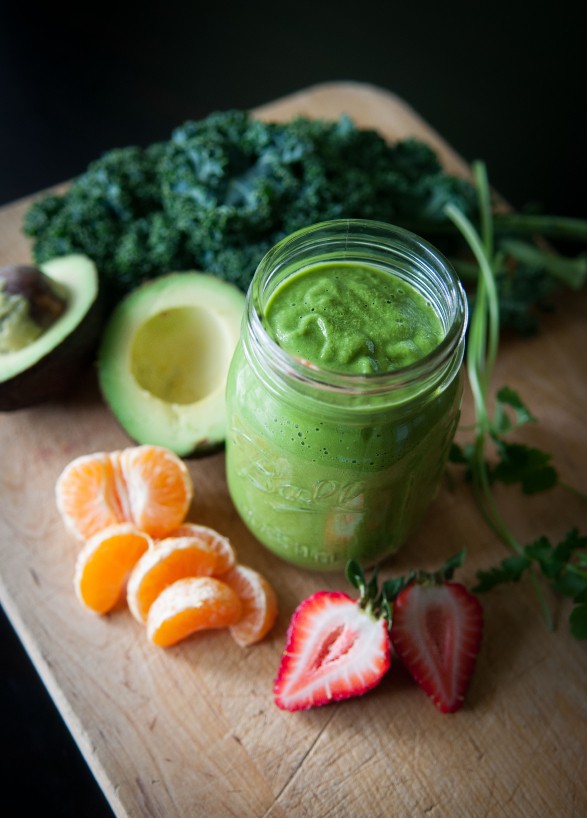Smoothies are everywhere. Search on the Internet and you’ll come across an endless number of smoothie recipes. But what are they and, more importantly, are they good for people with diabetes?
What is a smoothie, anyway?
In general, a smoothie is a blended drink made from fruits and/or vegetables; a liquid such as milk, a milk alternative, yogurt or juice; and ice. Some smoothie recipes may call for additional protein in the form of a powder. A smoothie’s “thickness” can vary and depends on the ratio of liquid to solid ingredients.
Why do people drink smoothies?
Smoothies aren’t for everyone, but they can be appealing to people who may not like eating a meal or who don’t have time to prepare a healthful meal. For example, many people find that drinking a smoothie for breakfast is a quick and easy way to get a healthy dose of their daily nutrient needs. Other people drink smoothies to help them achieve a particular health goal, such as losing weight or better managing their blood sugar. Smoothies can be used as a meal replacement, as a supplement to a meal, or as a snack.
Are smoothies safe for people with diabetes to drink?
Smoothies can be a great way to boost your nutrition. In general, these popular beverages provide vitamins, minerals, antioxidants, fiber, and protein. People who fall short of recommended amounts of fruits and vegetables can make up for that deficit by “drinking” them in the form of a smoothie. However, if you’re interested in trying this beverage, either in place of a meal or for a snack, it’s a good idea to first check with your doctor or dietitian. Depending on the recipe you use (if you’re making your own) and how much you drink, smoothies can be high in both calories and carbohydrate. It’s important to choose your ingredients carefully and keep an eye on the amount that you drink. And don’t forget: Checking your blood sugar before and after drinking a smoothie is important so that you can see how it affects your diabetes control.
What ingredients are best to put in a smoothie?
The beauty of smoothies is that there are endless combinations of ingredients that you can use; you may never get bored. To get you started, here are some tips to making “smooth sailing” of smoothies:
Choose your produce. Fruits? Vegetables? Both? It’s up to you. Berries, bananas, melon, mango, apples, pears, and kiwi are fruits that work well in smoothies. But don’t overlook vegetables. You may not care for kale, but mixed in a smoothie, you’ll never know what hit you! Besides kale, carrots, broccoli, spinach, and avocado are great choices. Also, using more vegetables and less fruit means less carbohydrate.
Choose your liquid. You can use water, but that can make your smoothie thin in consistency. Juice is an option, but that will add a lot of carbohydrate. Consider using skim or low-fat milk. Or, if you prefer or need to avoid dairy, use one of these milk alternatives: soy, almond, rice, hemp, or coconut milk. Go for plain, unsweetened versions of these “milks” to keep a lid on calories and carbs. Not all milk alternatives are the same, nutrition-wise. Almond, rice, and coconut milk are much lower in protein than cow’s milk or soy milk, for example. If you want more thickness, try adding plain, nonfat or low-fat Greek-style yogurt.
Add some protein. If you’re aiming for more protein in your eating plan or if you’re making your smoothie with a milk alternative, you can give your smoothie a protein boost by adding a protein powder. There are many options for protein powders, including whey protein (shown in some studies to help with blood sugar control) and casein protein. Avoid these proteins if you are allergic to milk. Other options include hemp, soy, brown rice, and pea proteins. Don’t go overboard with the protein powder, though; remember that protein contains calories. Too much protein can be dehydrating. And check with your doctor before using protein powder if you have kidney problems.
Boost nutrition with flaxseed or chia seeds. Besides giving your smoothie some bulk, flaxseeds and chia seeds can add protein, fiber, and omega-3 fatty acids. Mix 1 to 2 tablespoons of whole flaxseeds into your smoothie before blending. Add the same amount of chia seeds, but either soak them for 10–15 minutes or grind them before adding them to your smoothie.
Congratulations! You’ve made your own smoothie. For more ideas, check out Diabetes Self-Management’s smoothie recipes here.





